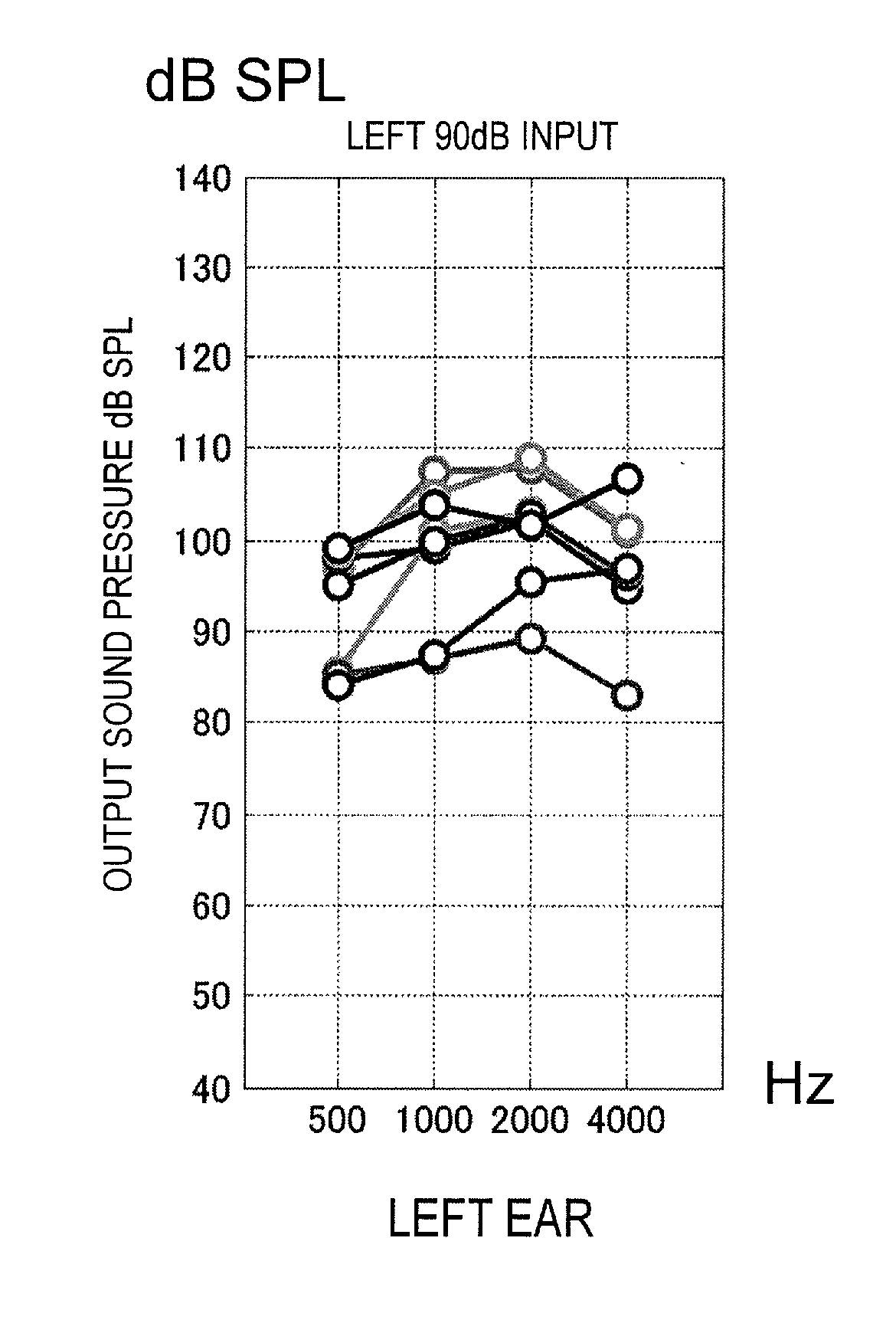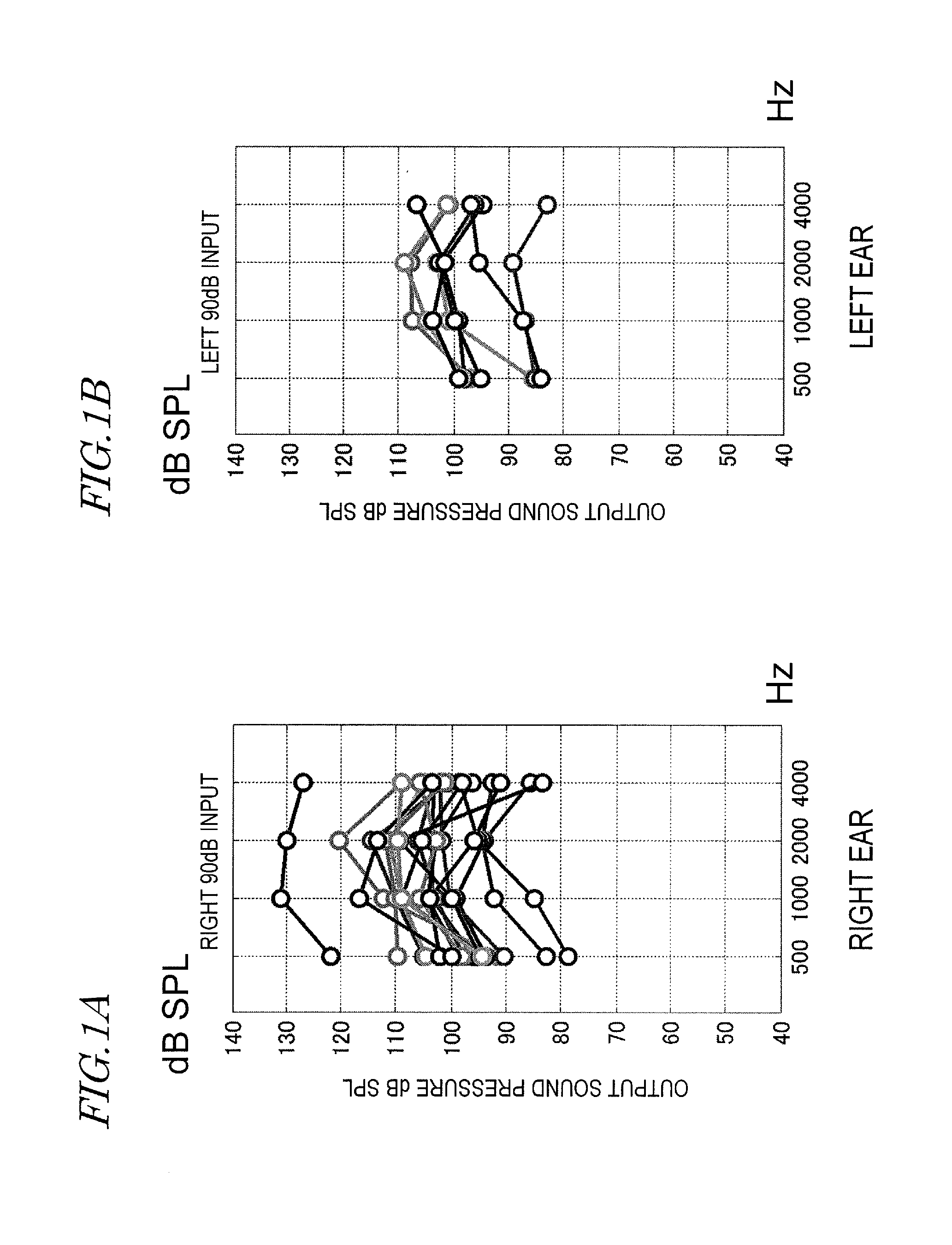Hearing aid gain determination system, hearing aid gain determination method, and computer program
a hearing aid and gain determination technology, applied in the field of hearing aid gain determination system, hearing aid gain determination method, computer program, can solve the problems of not being able to directly estimate the gain of a hearing aid for each frequency, and being unable to set a gain that is suitable for each user, so as to achieve the effect of reducing the sound pressur
- Summary
- Abstract
- Description
- Claims
- Application Information
AI Technical Summary
Benefits of technology
Problems solved by technology
Method used
Image
Examples
embodiment 1
[0136]Hereinafter, first, the hearing aid gain determination system 100 will be described in outline. Thereafter, the construction and operation of a hearing aid gain determination system 100 including the hearing aid gain measurement apparatus 1 will be described.
[0137]The hearing aid gain determination system 100 according to the present embodiment measures an electroencephalogram (event-related potential) of a user to whom a sound stimulation is presented, extracts a characteristic amount therefrom, and from a change pattern of the characteristic amount, determines a hearing aid gain under: (1) a 90 dBSPL input or a 80 dBSPL input; or (2) a 90 dBSPL input and a 80 dBSPL input.
[0138]In the present embodiment, a probe electrode is provided at the central portion (Cz), and a reference electrode is provided on the right mastoid, thus to measure an electroencephalogram as a potential difference between the probe electrode and the reference electrode. There is a possibility that the le...
PUM
 Login to View More
Login to View More Abstract
Description
Claims
Application Information
 Login to View More
Login to View More - R&D
- Intellectual Property
- Life Sciences
- Materials
- Tech Scout
- Unparalleled Data Quality
- Higher Quality Content
- 60% Fewer Hallucinations
Browse by: Latest US Patents, China's latest patents, Technical Efficacy Thesaurus, Application Domain, Technology Topic, Popular Technical Reports.
© 2025 PatSnap. All rights reserved.Legal|Privacy policy|Modern Slavery Act Transparency Statement|Sitemap|About US| Contact US: help@patsnap.com



